Destination Yorkshire, England with a Stop in New Jersey
This week’s round-up of new and updated genealogical records will begin in the United States with records from Minnesota and New Jersey. Our final destination is Yorkshire, England with the incredible new and updated collections at Findmypast. Baptisms, marriages, banns, and more!

United States – New Jersey – Church Records
Ancestry has a new record collection entitled “New Jersey, Episcopal Diocese of Newark Church Records, 1809-1816, 1825-1970.” In this group of records, you will find parish registers from Episcopal churches in the Diocese of Newark. Each register provides a record of the baptisms, marriages, and burials performed at that church. The records are indexed and are easily searchable. Sometimes, these registers include a list of families, persons confirmed, communicants, and details on offerings received by the church. However, these lists of families, communicants, et cetera are not yet indexed.
Baptismal records typically include, the name of the child, parents’ names, baptism date, and the officiator. In many cases the birth date and place are noted as well.
Marriage records include the marriage date, the couple’s names, residences, and the name of the officiator.
Lastly, burial records list the name of the deceased, date of death, date and place of the funeral, and officiating minister. Some funeral records may even include the cause of death and date and place of burial.
United States – New Jersey – State Census
Genealogists are usually well acquainted with the federal censuses taken each decade. Here in the United States, the first was taken in 1790. Many researchers may not know, however, that some states were taking state censuses every ten years on the five’s. For example, New Jersey has a census from 1855.
FamilySearch.org offers free access to all their database collections, including the New Jersey State Census of 1855. Most towns included in the census will only include the names of head-of-households, but the returns for Pequanac Township in Morris County also list the names of the wife and children in each household.
Missing areas in this census include, Burlington, Cape May, Mercer, Middlesex, Ocean, and Salem counties and unfortunately, other areas may be incomplete.
United States – Minnesota – School Records
FamilySearch has also made the Minnesota, Clay County, School Census Records, 1909-1962 available online. School records are a great resource for finding missing children in your family tree.
These records include digital images, but be aware! Some of the records contain many errors with some years incorrectly identified, particularly the 1960’s. Records will typically include the name of the student, the age of the student, and their parents’ or legal guardians’ names.
United States – Military
U.S. Muster Rolls of the Marine Corps, 1798-1937 can now be searched from FamilySearch. These digital images were taken from microfilm rolls at the National Archives. The records are arranged chronologically by month, then by post, station or ship, and are part of Record Group 127 Records of the U.S. Marine Corps. Not all of these muster rolls are complete and some have not yet been indexed. Be sure to check back regularly as more of the records are indexed.
In the meantime, if you do find your targeted ancestor, the following information may be listed:
- Name of officer or enlisted man
- Rank and unit in which served
- Date of enlistment
- Date of re-enlistment
- Name of ship
- Notes regarding promotions, transfers, physical description, etc.
In some cases, muster rolls also contain the following:
- Injuries or illness and type of treatment
- Date of death or discharge
- Date of desertion
- Date of apprehension
- Date of court martial
- Sentence of court-martial
England: Yorkshire Genealogy Records – Baptisms
Findmypast has just added four new collections for Yorkshire England. The Yorkshire Baptism records collection has over 79,000 new records. These new additions cover Church of England parishes across Rotherham, the Roman Catholic parishes of Doncaster, St Peter in Chains, Knaresborough, St Mary, Rotherham, St Bede, Sheffield, St Marie Cathedral, Sheffield, St Vincent and Staveley, and St Joseph. Each record includes a transcript and an image of the original document.
By using the parish location and the parents names, you may be able to continue your search in the next collection.
England: Yorkshire Genealogy Records – Marriages
With over 28,000 new records added to this Findmypast collection, you may finally be able to locate great-grandpa’s marriage record in the Yorkshire Marriages. The record collection actually has over 2.4 million records spanning near 400 years. Because of the time span covering several centuries, information contained on the records may vary. You may find any of the following pieces of information:
- Name
- Birth year
- Marriage date and place
- Residence
- Occupation
- Marital Status
- Spouse’s name, residence, and occupation
- Father’s name and Spouse’s father’s name
- Name of witnesses
England: Yorkshire Genealogy Records – Banns
Findmypast’s collection of Yorkshire Banns has some new additions. Each of the nearly 600,000 records contain both a transcript and an image of the original document. Some information will vary, but may include a name, place of banns, date of banns, marriage year, residence, and the name of their spouse.
These banns cover a very lengthy time span with records as early as the 1600’s through the 1930’s. In this case, a bann of marriage is the public announcement in a Christian parish church of an upcoming marriage. Banns were read on three consecutive Sundays in the church of both the bride and the groom.
England: Yorkshire Genealogy Records – Burials
 Lastly, Findmypast has been adding to their over 4 million Yorkshire Burials. The records found in this collection record the details of Roman Catholics buried across five parishes in Doncaster, Knaresborough, Rotherham, Sheffield and Staveley. Information found in this collection may include name, age at death, birth year, burial date, and burial place. Each record will contain at least a transcript and some offer a digital image as well.
Lastly, Findmypast has been adding to their over 4 million Yorkshire Burials. The records found in this collection record the details of Roman Catholics buried across five parishes in Doncaster, Knaresborough, Rotherham, Sheffield and Staveley. Information found in this collection may include name, age at death, birth year, burial date, and burial place. Each record will contain at least a transcript and some offer a digital image as well.
Thank you for sharing these new genealogy records online with fellow genies and society members! We appreciate you helping us spread the good news.
Didn’t find the records you’ve been pining for? Click here for a Google-based strategy on searching online for genealogy records.
3 Shocking Discoveries I’ve Made While Searching Cemeteries
There has always been something mysterious about cemeteries. Perhaps the knowledge that those interred took secrets to their grave has resulted in the enigmatic haze that seems to linger over these peaceful resting sites. But it’s not just the dead that hold secrets. Cemeteries themselves are often home to puzzling (and sometimes spooky) features.
Joy Neighbors, author of the book The Family Tree Cemetery Field Guide shares three of her most shocking finds while scouring cemeteries for genealogical clues.
Tombstone Tourist
We think of cemeteries as quiet tranquil places. As a “Tombstone Tourist,” I’ve spent years in cemeteries searching for genealogy clues, exquisite artwork, stunning vistas, and that perfect photograph. A trip to the graveyard is never boring. I’ve come back with tales of beauty, delight, and terror. Here are just three shocking discoveries I’ve made while searching in cemeteries.
1. Abandoned Crypts
There’s a cemetery in Kentucky that holds a baffling find; three 19th century mausoleums that have disappeared right in the middle of the grounds.
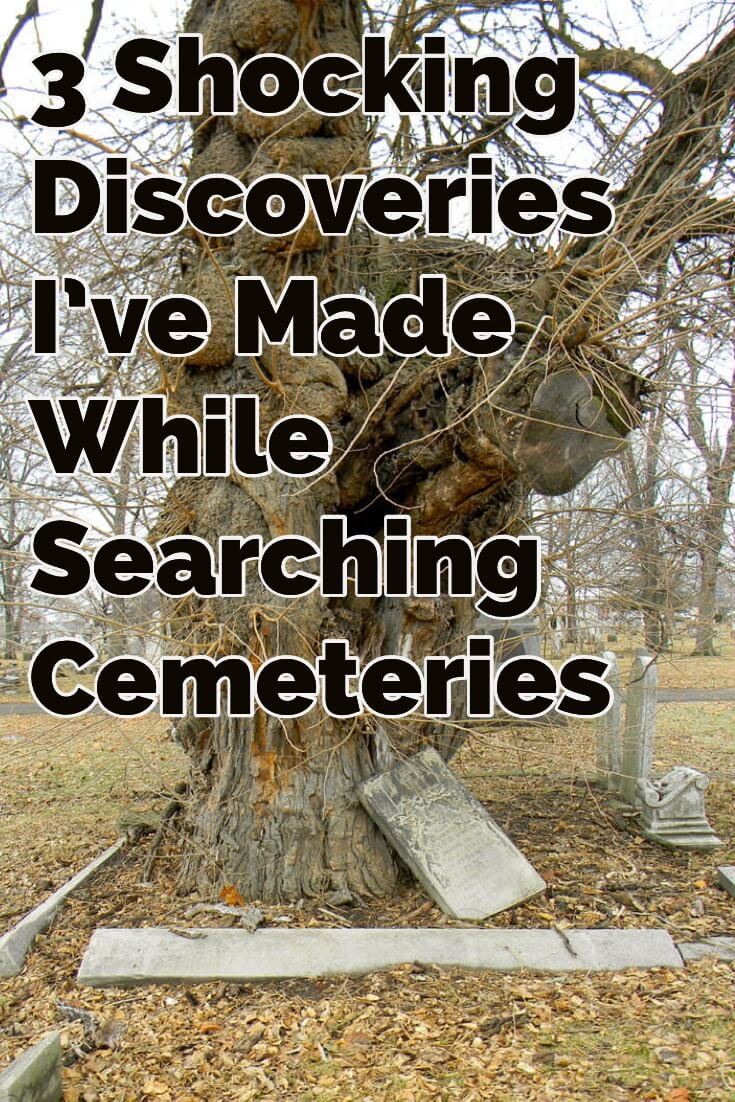
On a humid July day, I stepped inside a grove of trees to escape the searing heat. Inside that cool dimness stood three stately mausoleums, each with a façade protruding from a hill now enveloped in trees, vines, and shrubs. This thicket had been growing untamed for years.
The mausoleums stood side-by-side. The first was a small brick crypt with a surname above the entry along with a date “1895.” But the tomb had been bricked up for so long, trees grew on top obscuring its existence.
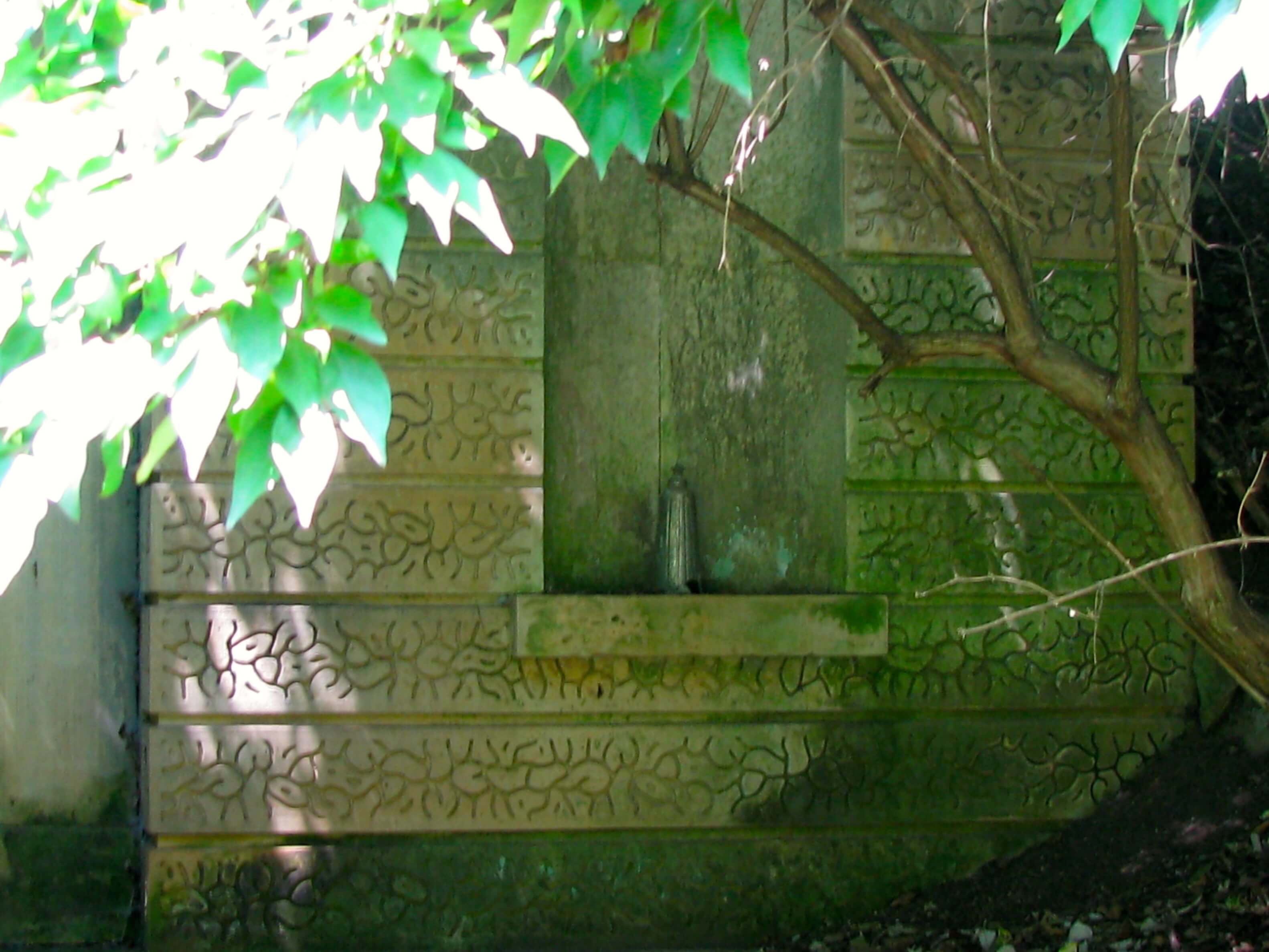
The middle mausoleum was built from pressed concrete with niches and arches along the walls. Again, the doorway and windows were bricked shut against the onslaught of trees and ropy vines that brushed and clung to its surface.
The third mausoleum was constructed of plainer concrete set off in a corner. No names or dates were visible but trees blocked any approach. It was visible only through a tangle of vines and foliage.
Who had these monuments been for?
Why had they been abandoned?
Had the bodies been moved when family members relocated?
Or were they simply forgotten?
Perhaps no one left payment for special care in perpetuity.
Apparently, what has been lost and forgotten shall remain so.
2. The Grave in the Middle of the Road
Having grown up in Indiana, I can assure you that Hoosiers are a practical lot. But there’s one roadside attraction that will cause the most stoic of residents to stop and ponder the audacity and fortitude it took to keep a grave in the middle of the road for close to 200 years.
The story began in 1808 when Nancy Kerlin married William Barnett, the great, great, great grandson of Pocahontas and John Rolfe.
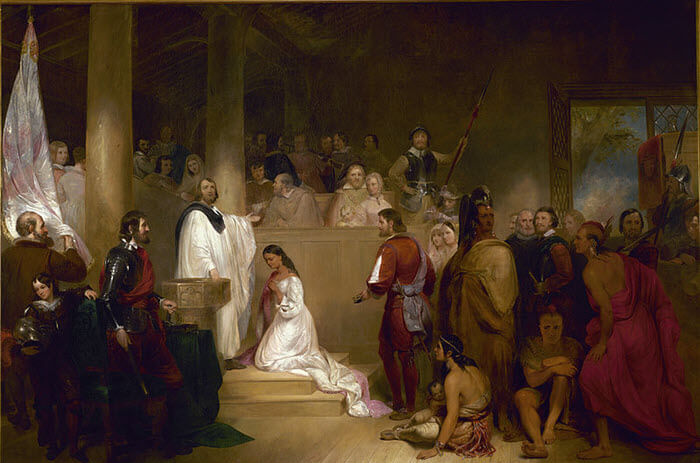
Baptism of Pocahontas by John G. Chapman, 1840. (Public Domain Image)
They settled near what would become Amity, Indiana to raise their family.
Nancy died on December 1, 1831 and was buried on top of a small hill overlooking Sugar Creek, one of her favorite spots. Soon others were also buried here and over the years a small county cemetery developed.
But then progress reared its head around the turn of the last century and Johnson County decided that a road needed to be built to connect Amity with other thoroughfares. This meant the grave had to be relocated.
Nancy’s grandson, Daniel G. Doty had a problem with that.
Doty went to the county and voiced his opposition. Nothing changed so he decided to take matters into his own hands. When county work crews arrived they found Doty sitting on his grandmother’s grave – with a loaded shotgun. Again, Doty told the county that his grandmother would stay where she was. If they insisted on trying to move her grave, they would have to deal with him. With that prospect, county workers agreed to let things “rest” where they were.
A concrete slab was placed over the grave in 1912 to protect it.
An historical marker was added in 1982, and Nancy became an anomaly.
But three years ago, after numerous reports of accidents, something had to be done.
In 2016, Nancy’s grave was temporarily moved to widen the road. It was the perfect time for University of Indianapolis archaeologists to see just what was buried there.
Amazingly, they discovered that residents have been driving past not only Nancy’s grave but also the remains of six others – a man, a woman and four children. Was this the Barnett family? No one’s said for sure but the state has now designated this small spot in the middle of the road a family cemetery.
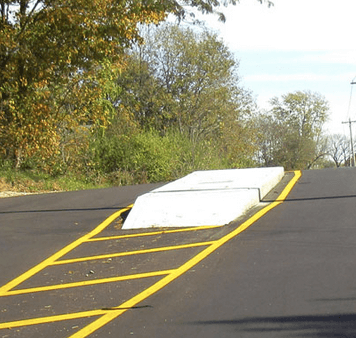
The Grave in the Middle of the Road
3. The Tree of the Dead
In Terre Haute, Indiana there stands the most massively disfigured cemetery tree I’ve ever encountered. Though its genus is no longer identifiable, it stretches at odd angles as if reaching out in despair.
It was a frigid January day when I encountered what I have since called “The Tree of the Dead.”
I’d been taking photos when my husband waved me over to see his find. Over the years I have seen hundreds of ominous cemetery trees, but none like this. This tree was surely waiting for the headless horseman to plunge through that opening with a rush of fetid air as he continued searching for his head.
Stepping closer, I attempted to take a photo, but the tree was having none of it. My camera shut down immediately. There are several explanations for this common cemetery occurrence; the batteries are too cold, connections are corroded, post seals are damaged, or spirits are sapping energy attempting to manifest. Yes, well … but after changing the batteries two more times, I had yet to get one picture.
My husband thrust his camera into my hands and I was able to get two photos before the batteries died. One shows the tree in all of its appalling façade with twisted limbs reaching akimbo to the sky. (Notice the limb with a dragon’s head at the end?)
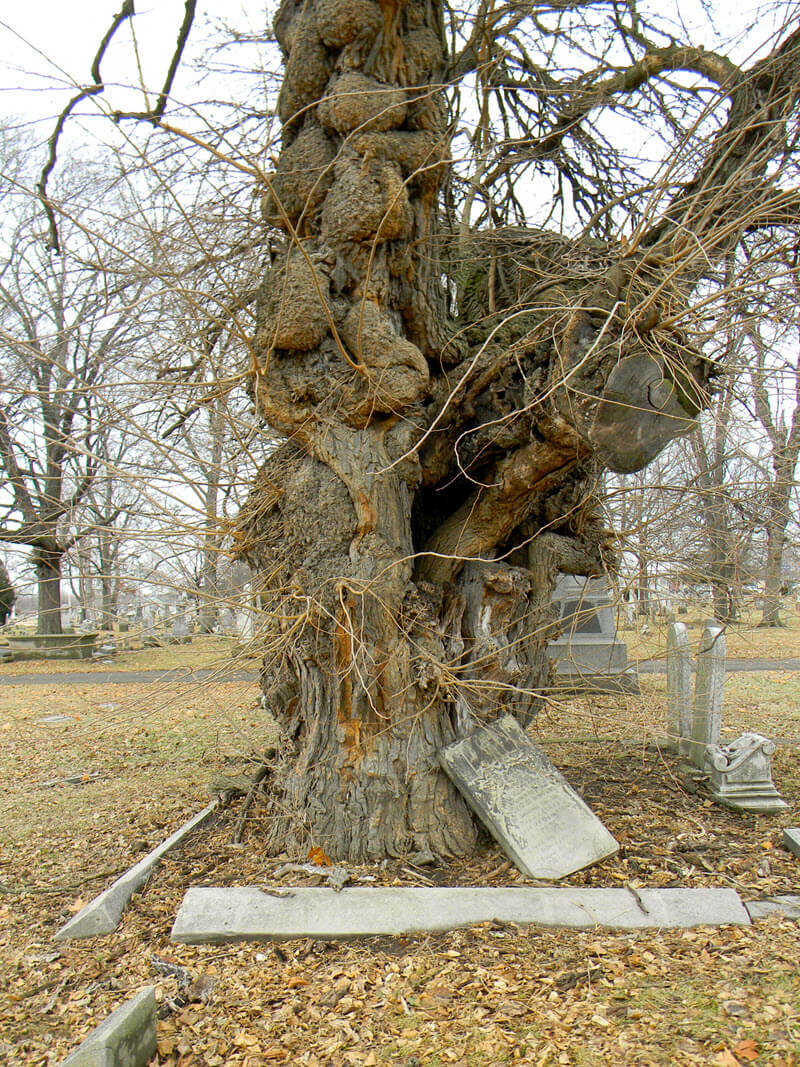 The second shot shows the opening in the middle of the tree: a bizarre heart shape. And the mishmash of tombstones scattered around the plot date to the late 1800s but names are indecipherable.
The second shot shows the opening in the middle of the tree: a bizarre heart shape. And the mishmash of tombstones scattered around the plot date to the late 1800s but names are indecipherable.
Who is buried here?
What happened to give the tree such an appearance?
Could it be caused by a decades-old drought?
Maybe arsenic used to embalm bodies back in the 19th century slowly leaching its way up into the tree?
Or could it be … something else?
A visual reminder of how perilously close fact and fiction are entwined in the graveyard.
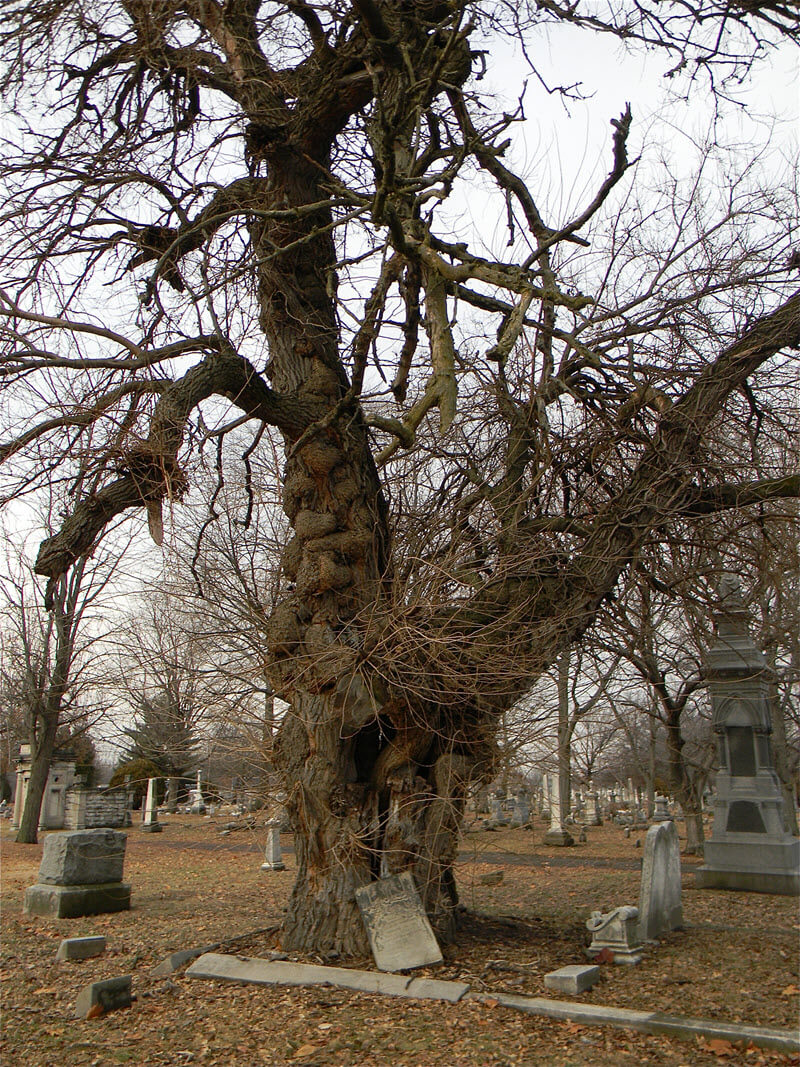
Cemetery Secrets
Cemeteries hold a vast amount of secrets, most of which we may never know. But the genealogist’s pursuit of answers means we’ll never stop exploring and asking the questions, and perhaps one day, those secrets taken to the grave may be revealed.
Cemeteries are crucial for any genealogist’s search, and The Family Tree Cemetery Field Guide by Joy Neighbors will show you how to search for and analyze your ancestors’ graves.
Discover tools for locating tombstones, tips for traipsing through cemeteries, an at-a-glance guide to frequently used gravestone icons, and practical strategies for on-the-ground research. And once you’ve returned home, learn how to incorporate gravestone information into your research, as well as how to upload grave locations to BillionGraves and record your findings in memorial pages on Find A Grave.
Click here to order your copy today!
Learn more about using Billion Graves:
(Click on player to unmute sound)
About the Author: Joy Neighbors is a national speaker, author, freelance writer, blogger, and avowed Tombstone Tourist. Her book, The Family Tree Cemetery Field Guide focuses on how to locate cemetery records, what to do when you get to the cemetery and how to understand the silent language of the stones. She also shares a few stunning family secrets along the way. Joy also writes the weekly cemetery culture blog, A Grave.

Disclosure: This article contains affiliate links and Genealogy Gems will be compensated if you make a purchase after clicking on these links (at no additional cost to you). Thank you for supporting Genealogy Gems!
New Genealogy Records Online Include the Norway Census
Genealogy Giants MyHeritage and Ancestry have both added 3 Norway Census collections to their databases, totaling millions of new records. If you have Norwegian origins, these census documents contain valuable details about your ancestors that have been largely...Genealogy Gems Podcast Episode 229
with Lisa Louise Cooke
May 2019
Listen now, click player below:
In this episode:
- Two listeners shares an exciting find using Lisa’s research strategies
- Lisa provides next steps on German research in response to a listener question
- Your Master Family Tree, and Sharing Branches Online Explained
- The unusual history of one of the earliest forms of the World Wide Web
NEWS:
Lisa Louise Cooke is back in the studio after two weeks on the road speaking at the Ohio Genealogical Society (OGS) Conference and the National Genealogical Society (NGS) Conference.
Each conference was great and had its own unique feel, and there were many new genealogists in attendance.
Genealogy Gems listener Carol stopped by and enthusiastically shared with how the eBay search strategies for family history that Lisa discussed in episode 140 paid off in a big way!


MAILBOX:

Robin wrote in to share how Sydney Orton’s song with her grandpa in Genealogy Gems Podcast episode 228 brought her to tears in a toll plaza while driving!
Steve wrote in to rave about the value that his new Genealogy Gems Premium eLearning membership has brought to his family history research.
Rylee says she’s grateful to have found the podcast and she shares a story of genealogical discovery that she hopes will inspire others. Rylee asks “How do I find sources for these people? I have searched all over ancestry and Family Search and have had no luck again. I really want to believe that the people I have as Adam’s parents and siblings all the way through his 2nd great-grandparents (paternal) are truly his family but I need to get more information. Where can I go for help with German records and where can I continue my search?”
Lisa’s comments: You’re absolutely right, what you found are just hints. It sounds like it’s time for you to move on from the “Genealogy Giants” (Ancestry, FamilySearch, etc.) and into German records websites, libraries, and archives to find real sources that nail down the family tree.
Lisa recommends the Genealogy Giants quick reference comparison guide.
We have several articles and episodes at Genealogy Gems that can help you do this:
- Go to genealogygems.com
- At the top of the home page select “German” from the “Start Learning” drop down menu
- That will take you to these results pages featuring our German research strategies.
I’m optimistic for you because Germans are known for keeping excellent records, and I have had good luck in searching them.
GEM: Your Master Family Tree, and Sharing Branches Online Explained

I describe it this way: Plant your tree in your own backyard and share branches online.
A master family tree has three important characteristics:
- It is owned and controlled by you.
- It is the final say on what you currently know about your family tree.
- It is protected with online backup to ensure it is safe.
Plant Your Master Family Tree
Lisa uses RootsMagic software for her master family tree. Learn more about GEDCOM files in this article: GEDCOM File (What is It & How to Use This Genealogy File)
Protech Your Master Family Tree
Lisa uses Backblaze to back up her master family tree and computer. Visit www.backblaze.com/lisa
(Using this link also helps keep this free podcast free. Thank you!)
Read more: How to Download Backblaze in 4 Easy Steps
Share Branches Online
Genealogy Giants Guide available in the Genealogy Gems store.

Read Lisa’s article: Planting Your Master Genealogy Family Tree for all of the strategies mentioned in this episode.
The free podcast is sponsored by:
PROFILE AMERICA: Friday, May 24th, 2019
In a way, today marks the 175th birthday of the World Wide Web. Only it was electro-mechanical, not digital. On this date in 1844, Samuel F.B. Morse activated the first telegraph line, sending a dots-and-dashes code message from the U.S. Capitol building to a receiver in Baltimore.
By the late 1850s, the first telegraph cable had been laid across the Atlantic Ocean, and in 1861, the telegraph spanned the continental United States. Over the ensuing decades, the wires wrapped around the world.
From the 1844 demonstration, telecommunications today has grown into a half-trillion dollar a year industry, and employs more than 1 million workers in over 59,000 industry establishments.
You can find more facts about America from the U.S. Census Bureau online at www.census.gov.
Sources:
Joseph Nathan Kane, Kane’s Famous First Facts, Fifth Edition, H.W. Wilson Co., New York, NY, 1997, #7692.
- Demonstration and development, accessed 2/20/2019
- Transatlantic cable, accessed 2/20/2019
- Telecommunications employees and establishments, County Business Patterns, NAICS 517
- Telecommunications revenues, Economic Census, NAICS 517
Become a Genealogy Gems Premium eLearning Member
Gain access to the complete Premium Podcast archive of over 150 episodes and more than 50 video webinars, including Lisa Louise Cooke’s newest video The Big Picture in Little Details.
Learn more here.
(Membership doesn’t auto-renew because we don’t like that either. Prior to your membership expiring you’ll receive a friendly reminder email from us.)
Genealogy Gems App Users
Don’t miss the bonus content in this episode. Tap the “gift” icon on the episode screen in the app.
Get the app here or search for “Genealogy Gems” in your device’s app store.
Download the Show Notes PDF in the Genealogy Gems Podcast app.





